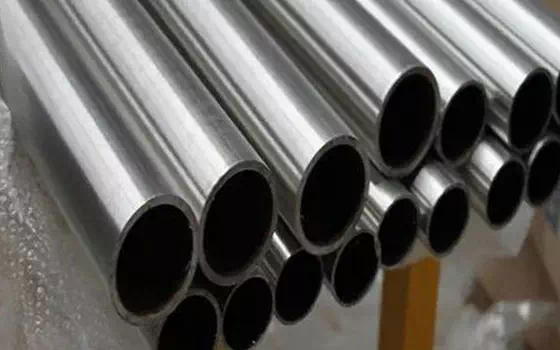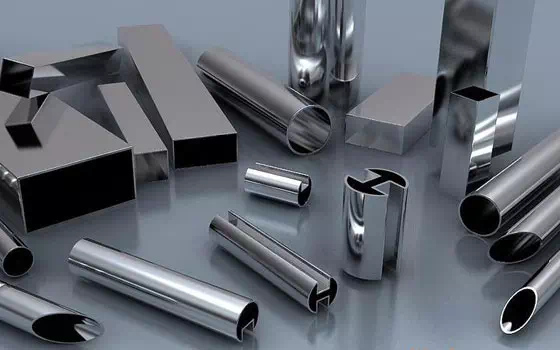Welcome to Shandong Zhishang Steel Co., Ltd.
Get a free quote quickly!
Lorem ipsum dolor sit amet, consectetur adipiscing elit. Donec id erat sagittis, faucibus metus malesuada, eleifend turpis. Mauris semper augue id nisl aliquet, a porta lectus mattis. Nulla at tortor augue. In eget enim diam. Donec gravida tortor sem, ac fermentum nibh rutrum sit amet. Nulla convallis mauris vitae congue consequat. Donec interdum nunc purus, vitae vulputate arcu fringilla quis. Vivamus iaculis euismod dui.
Stainless steel double seal pipe is a special design of the pipe, its main feature is that both the inner and outer layers are made of high-quality stainless steel material, and the double seal treatment is carried out at the interface. This design can effectively prevent the leakage of liquid or gas inside the pipeline, thus ensuring its safety and stability during use.
The inner and outer layers of the stainless steel double-sealed pipe are made of high-quality stainless steel material, which has corrosion resistance, high temperature resistance, wear resistance and other characteristics, so it can ensure that the pipe can maintain good performance in a variety of harsh environments. At the same time, the smooth surface of stainless steel also makes cleaning and maintenance work very simple.
At the interface, the stainless steel double sealing pipe adopts double sealing technology. This technique usually involves the use of special sealants or rubber gaskets to ensure the tightness of the interface. The double seal not only prevents liquid or gas leakage from the interface, but also provides additional protection when the pipe is impacted by external forces.
In general, stainless steel double-sealed pipe is a pipeline product with reasonable structure and excellent performance, which is widely used in chemical, petroleum, food, pharmaceutical and other fields.
Does 304 stainless steel pipe have a specific product classification?
Stainless steel pipe is a kind of material widely used in various industrial fields, which has the characteristics of corrosion resistance, high temperature resistance and high strength. In the stainless steel pipe market, according to different uses and specifications, it can be divided into a variety of different types.

First of all, according to the wall thickness to divide, stainless steel pipe can be divided into thin wall pipe and thick wall pipe. Thin-walled tubes are usually used in occasions where smaller pressure or fluid flow is required, such as building decoration, mechanical parts, and so on. The thick wall pipe is suitable for engineering fields under greater pressure or with greater fluid flow, such as petroleum, chemical industry, shipbuilding and so on.
Secondly, according to the different production process, stainless steel pipes can be divided into seamless pipes and welded pipes. Seamless pipe is processed by cold drawing or hot rolling process, with high precision and surface quality. Welded pipe is made by rolling steel plate or strip into a tube, which is suitable for mass production and low cost requirements.
In addition, there are some special types of stainless steel pipes, such as ultra-low carbon 304 stainless steel pipes, nickel-based alloy steel pipes and so on. These special types of stainless steel tubes have higher strength, corrosion resistance and wear resistance, and are suitable for some areas with special requirements, such as the nuclear industry, aerospace and so on.
In summary, 304 stainless steel pipes can be classified according to factors such as wall thickness, production process and special needs to meet the needs of different industries and applications.
There may be many factors for the cause of porosity in stainless steel pipes. The following are some of the main reasons that may cause pores in stainless steel pipes:
Material issues: The use of low-quality stainless steel materials or materials that do not meet specifications can lead to the formation of pores. These materials may have defects, such as inclusions, bubbles or other unevenly distributed substances, which may lead to the formation of pores during processing.
Improper welding process: In the welding process, if the welding parameters are set incorrectly or improperly operated, such as too much current, too high voltage, too fast welding speed, etc., it may lead to overheating of the weld, resulting in porosity. In addition, the quality of the welding wire or protective gas may also have an impact on the formation of pores.

Improper heat treatment: In the heat treatment process, if the temperature is not properly controlled or the holding time is insufficient, it may lead to the internal organization of the stainless steel pipe is unstable and the porosity is generated. In addition, excessive cooling may also lead to the formation of pores.
Mechanical damage: During transportation, handling or installation, stainless steel pipes may be squeezed or hit by external forces, resulting in cracks or pores on the surface or inside. These mechanical injuries are usually related to the strength and toughness of the material.
Corrosion and contamination: Stainless steel pipes may come into contact with corrosive media or contaminants during use, which may erode the oxide layer on the surface of stainless steel, leading to the formation of pores. In addition, the cleanliness of the stainless steel surface will also have an impact on the generation of pores.
In summary, the reasons for the porosity of stainless steel pipes may be many, including material problems, welding process problems, heat treatment problems, mechanical damage, corrosion and pollution and other factors. To effectively avoid these problems, strict control and management are needed from the aspects of material selection, welding process, heat treatment, packaging and transportation.